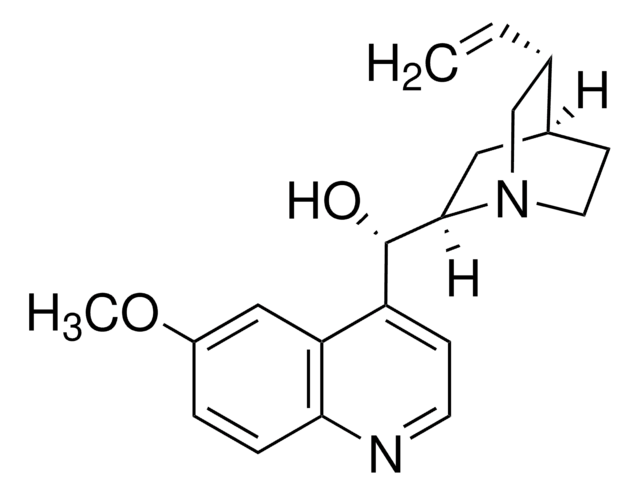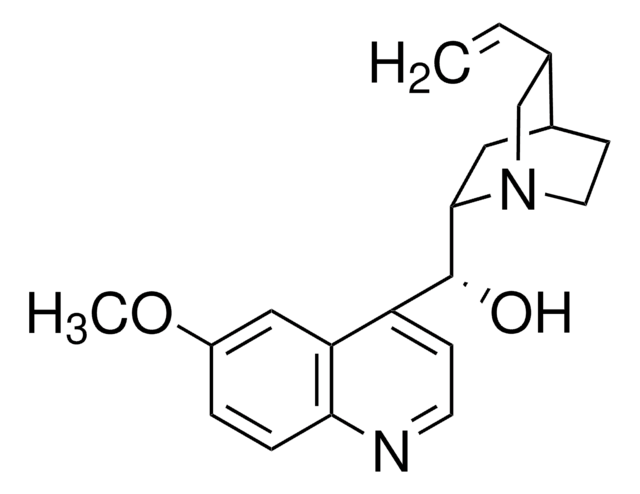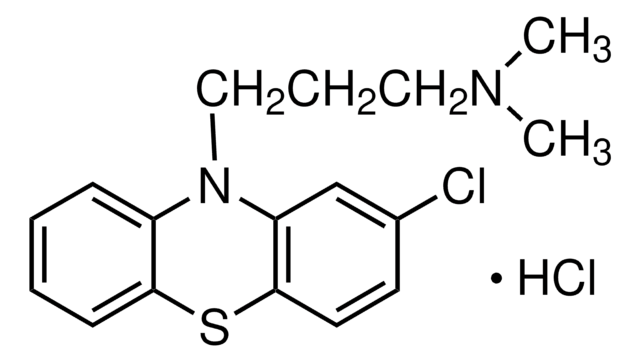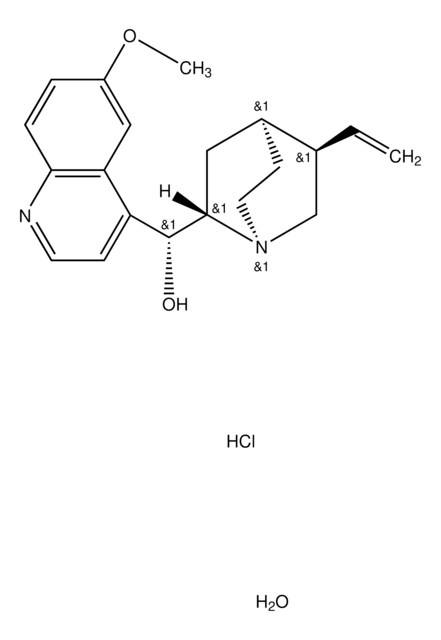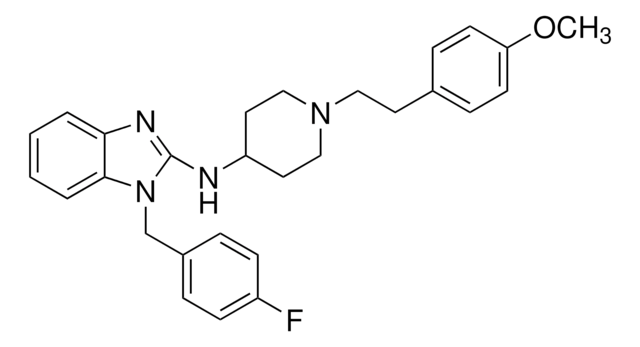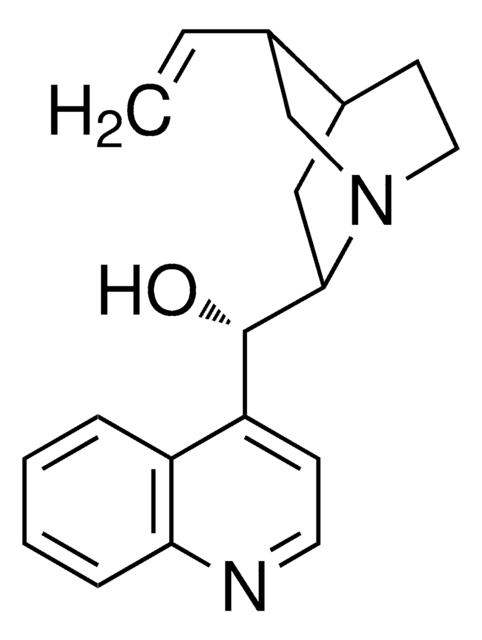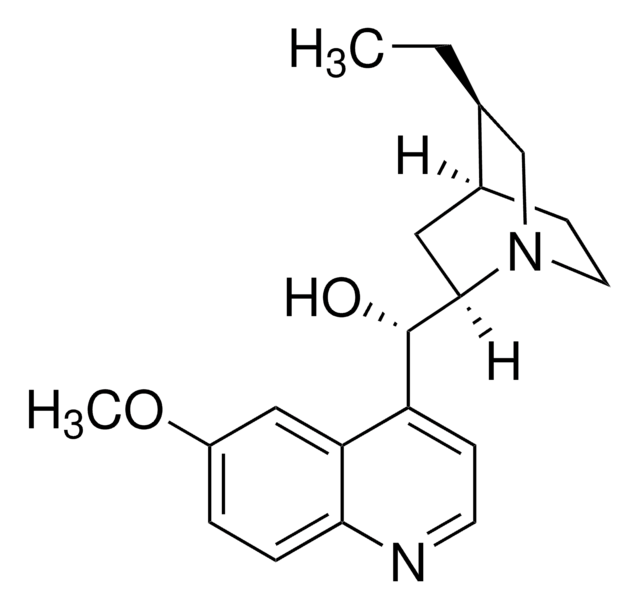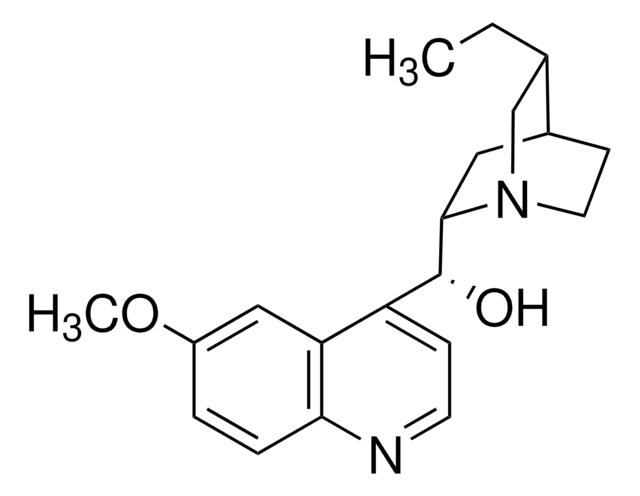Q3625
Quinidine
sodium channel blocker
About This Item
Productos recomendados
Nombre del producto
Quinidine, anhydrous
grade
anhydrous
Quality Level
impurities
≤20% Dihydroquinidine (according to USP specifications., actual content given on label)
mp
168-172 °C (lit.)
originator
Bayer
SMILES string
COc1ccc2nccc([C@H](O)C3CC4CCN3C[C@@H]4C=C)c2c1
InChI
1S/C20H24N2O2/c1-3-13-12-22-9-7-14(13)10-19(22)20(23)16-6-8-21-18-5-4-15(24-2)11-17(16)18/h3-6,8,11,13-14,19-20,23H,1,7,9-10,12H2,2H3/t13-,14-,19+,20-/m0/s1
InChI key
LOUPRKONTZGTKE-LHHVKLHASA-N
Gene Information
human ... ABCB1(5243) , CYP2D6(1565) , CYP3A4(1576) , KCNH1(3756) , SCN10A(6336) , SCN11A(11280) , SCN1A(6323) , SCN2A(6326) , SCN3A(6328) , SCN4A(6329) , SCN5A(6331) , SCN7A(6332) , SCN8A(6334) , SCN9A(6335)
mouse ... Abcb1a(18671) , Abcb1b(18669)
rat ... Cyp2d1(266684) , Cyp2d2(25053) , Cyp2d3(24303) , Cyp2d4v1(171522)
¿Está buscando productos similares? Visita Guía de comparación de productos
Application
- as an inhibitor of cytochrome P450 enzyme isoform CYP2D6
- as a potassium (K+) channel blocker in microglia
- to test its effect on electrophysiological behaviour of human induced pluripotent stem cells (hiPSC) cardiomyocytes
Biochem/physiol Actions
Features and Benefits
signalword
Danger
hcodes
Hazard Classifications
Acute Tox. 3 Oral - Skin Sens. 1
Storage Class
6.1C - Combustible acute toxic Cat.3 / toxic compounds or compounds which causing chronic effects
wgk_germany
WGK 1
ppe
dust mask type N95 (US), Eyeshields, Faceshields, Gloves
Elija entre una de las versiones más recientes:
¿Ya tiene este producto?
Encuentre la documentación para los productos que ha comprado recientemente en la Biblioteca de documentos.
Los clientes también vieron
Protocolos
LC/MS/MS Analysis of Interacting Cardiac Drugs Digoxin, Quinidine, Amiodarone and Verapamil on Titan™ C18
Contenido relacionado
Discover Bioactive Small Molecules for ADME/Tox
Nuestro equipo de científicos tiene experiencia en todas las áreas de investigación: Ciencias de la vida, Ciencia de los materiales, Síntesis química, Cromatografía, Analítica y muchas otras.
Póngase en contacto con el Servicio técnico